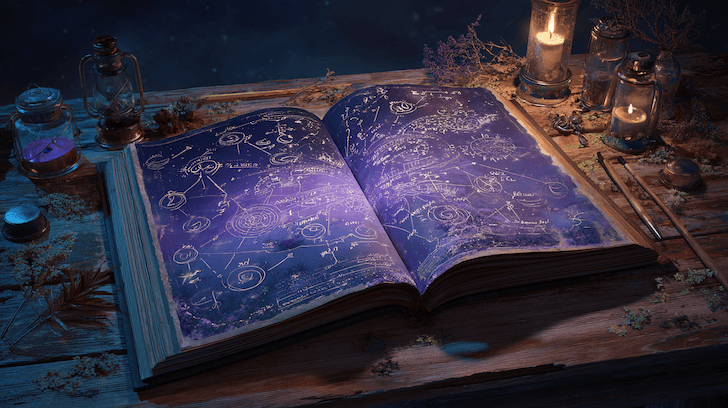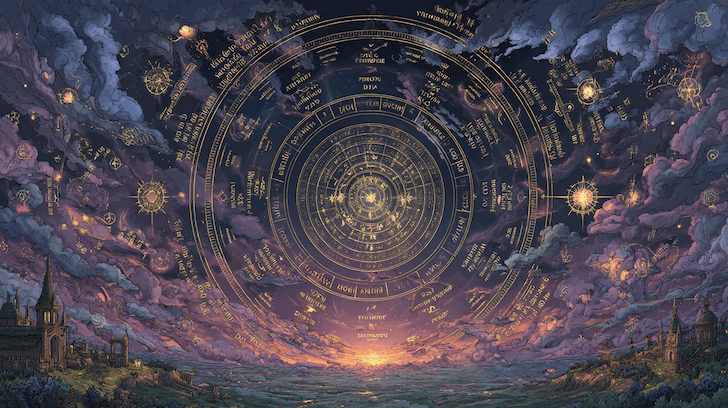The Psychology of Modern Astrology

Modern astrology reads like a language of the inner life. Where ancient practice emphasized civic omens and external fate, contemporary astrologers focus on motivation, emotion, relationship patterns, and growth. The chart functions less like a verdict and more like a mirror—one that helps you recognize repeating themes and make better choices.
The big shift: from “What will happen?” to “ What does this mean, and how can I meet it well?” Same sky, new questions—psychology reframed the craft.
From Omen to Psyche: What Changed
| Dimension | Earlier Emphasis | Modern Emphasis |
|---|---|---|
| Purpose | Prediction, statecraft, medical timing | Meaning, character, development, agency |
| Audience | Rulers, courts, guilds | Individuals, couples, organizations |
| Cosmology | Fixed fate within divine order | Archetypes, symbolism, choice within pattern |
| Tooling | Seven visible planets, lots, time-lords | Adds outer planets, asteroids, psychology of aspects |
| Tone | Judgment and rule sets | Dialogue, reflection, collaboration |
Key Currents and Influencers
| Figure / Movement | Era | Impact on Psychology of Astrology |
|---|---|---|
| Alan Leo | Late 19th–early 20th c. | Shifted delineation toward character and ethics; popularized natal focus |
| Carl G. Jung | 20th c. | Archetypes, synchronicity; astrology as symbolic mirror for individuation |
| Dane Rudhyar | Mid–late 20th c. | Humanistic astrology; cycles as processes of becoming |
| Liz Greene | Late 20th–21st c. | Depth-psychological synthesis; Saturn, relationships, fate as meaning |
| Reinhold Ebertin (Cosmobiology) | Mid 20th c. | Midpoints as psychological signatures; event ↔ pattern links |
| Project Hindsight & Traditional Revival | 1990s–present | Recovered ancient timing (sect, lots, profections) and blended it with psychological language |
Why Psychology and Astrology Fit
Astrology offers structured symbols; psychology offers models of the mind. Together they let us name patterns that otherwise stay vague.
- Planets feel like inner functions (drive, bond, meaning, boundaries).
- Signs describe style (elemental needs, pacing, strategy).
- Houses place those dynamics in life arenas (home, work, partnership, vocation).
- Aspects map inner conversations—support, tension, projection, fusion.
- Cycles give timing: when a motif returns for revision or renewal.
Planets as Psychological Functions (Modern Lens)
| Planet | Function | Growth Edge When Challenged |
|---|---|---|
| Sun | Coherent identity, purpose | From performance → authenticity |
| Moon | Attachment, regulation | From reactivity → soothing rhythms |
| Mercury | Narrative, meaning-making | From rumination → clear thinking |
| Venus | Bonding, value, aesthetics | From people-pleasing → mutuality |
| Mars | Agency, boundary, courage | From reactivity → skillful action |
| Jupiter | Belief, hope, expansion | From inflation → grounded faith |
| Saturn | Structure, time, mastery | From inhibition → earned authority |
| Uranus | Individuation, freedom | From chaos → creative change |
| Neptune | Imagination, unity | From fog → inspired clarity |
| Pluto | Depth, power, transformation | From control → honest reform |
How Modern Readings Work (In Practice)
- Start with the client, not the doctrine. Translate symbols into the person’s language and goals.
- Name the pattern, not the fate. “Mars–Saturn tension” becomes a concrete skill agenda, not a sentence.
- Use tight orbs and clear priorities. Angles, luminaries, chart ruler, and repeating signatures set the core theme.
- Time the story gently. Transits, progressions, profections frame windows for focus—no doomcasting.
- Emphasize consent and ethics. Modern practice treats astrology as reflective support, not authority.
Ancient Tools, Modern Uses
Modern astrology didn’t abandon tradition—it repurposed it.
| Classic Tool | Psychological Use Today | Example |
|---|---|---|
| Annual Profections | Theme of the year by house ruler | A 7th-house year as a relationship/contract focus |
| Solar/Lunar Returns | Yearly mood and priorities | Return Ascendant describing public tone for the year |
| Lots (e.g., Fortune/Spirit) | Body/effort orientation | Spirit as where intention meets effort; Fortune as environmental weather |
| Dignities/Reception | Resourcing and support | A planet in ruler’s sign = help; in detriment = strategy needed |
Outer Planets and the Modern Psyche
The discoveries of Uranus, Neptune, and Pluto expanded astrology into the collective and transpersonal:
- Uranus mirrors individuation shocks and breakthroughs—sudden need for authenticity.
- Neptune mirrors longing, imagination, and porous boundaries—both inspiration and confusion.
- Pluto mirrors shadow work and power dynamics—death–rebirth cycles that change a life’s trajectory.
These are not “good” or “bad”—they’re large energies that benefit from psychological framing and practical support.
Strengths, Limits, and Responsible Use
Modern astrology excels at meaning-making, timing awareness, and language for complexity. It is not a replacement for medical, legal, or financial counsel; nor is it a shortcut around personal responsibility.
- Treat symbols as invitations, not orders.
- Prefer collaborative questions to proclamations.
- Use timing to plan support—therapy, rest, launches—rather than to force outcomes.
- Beware projection: “They’re my Pluto” is a sign to do your own shadow work.
The modern stance isn’t “anything goes.” It’s “symbols + ethics + timing,” in service of clearer choices.
What This Means for You
Reading your chart psychologically gives you vocabulary for your drives and timelines for growth. You’ll see why the same themes recur—and how to meet them differently this time. That’s the promise of modern astrology: not certainty, but clarity you can use.
Astrology and Jungian Archetypes

Ancient Astrology vs. Modern Astrology

How to Find a Chart’s Main Theme

Get Your Birth Chart
Calculate your complete astrological chart with precise astronomical data based on your birth time and location
Generate Chart